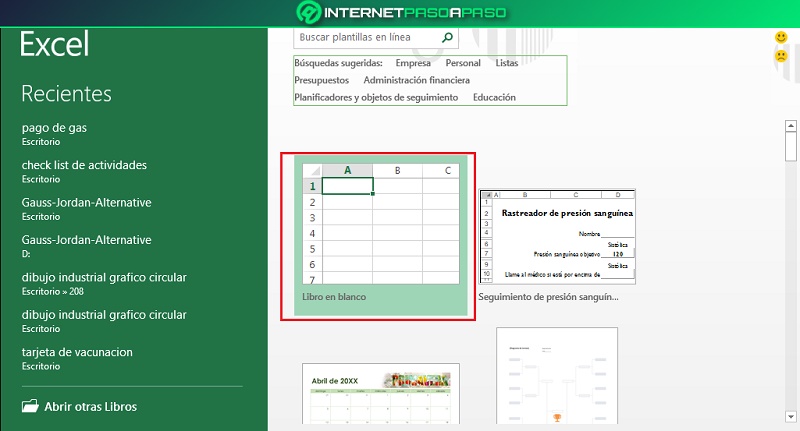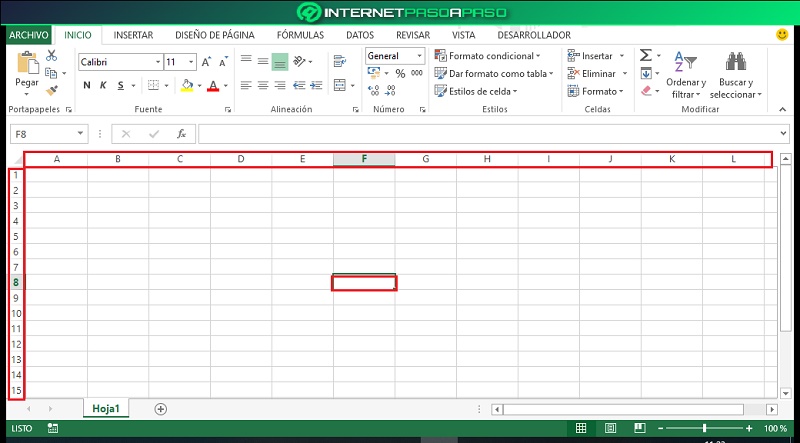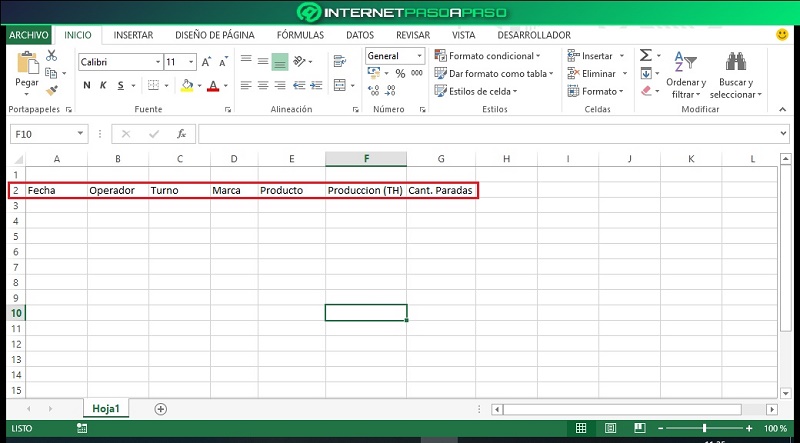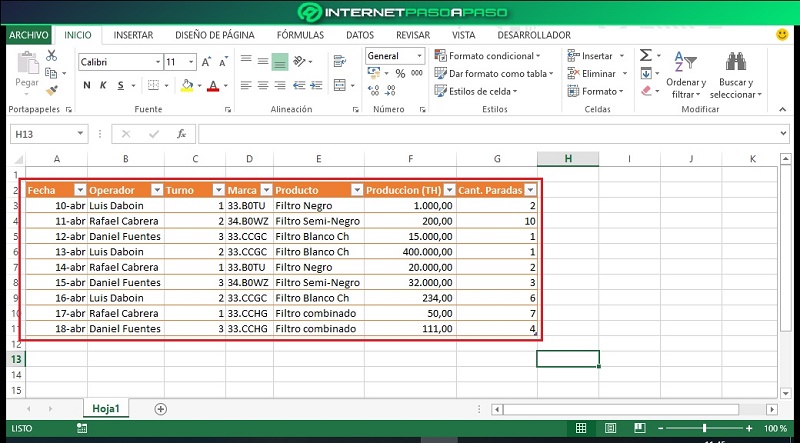
Index:
UPDATED ✅ Do you want to know how to make a database in Microsoft Excel like an expert? ⭐ ENTER HERE ⭐ and learn everything FROM ZERO!
the databases They are widely used in the business world. because in them you can better organize and express information. Mainly are made in Excel, since it is a complete and easy-to-use tool.
There are different database typeseach with a different structure and organization due to its purpose. So that you understand this topic a little more deeply, in this post we will explain the concept of databases and their classifications.
We will also teach you how to create a database in excel. Following the steps that we leave, it will not take you 10 minutes to elaborate its structure.
What is a database and what types exist in Microsoft Excel?
A data base It is where all the information is stored.. This term according to history was used for the first time in 1963, in California, USA. By that time it was implementing the data storage and control methodology.
Usually can be defined as database, all those whose structure is made up or grouped by a set of information. From the point of view of computing we can define it as follows; the databases are blocks of information grouped in tables, and comply with the characteristic that can be edited.
There are different databases, each one is made up of different structures whose function is Store information. These boards are made up of Columns and rows, each column divides and organizes the information of the elements.
We can also define as database, the set of organized elementswhose stored data is exploited for the purpose of maintaining data in a particular company or business.
All databases, regardless of their type, depend on the main characteristics that allow them to enter within the definitions made:
- Collect physical and logical informationknown as data.
- keeps a minimal redundancy.
- Can be manipulated or altered by any user, or multiple of them.
- Integrity of the data.
- explained and developed complex queries optimized.
- Can be auditedand has a access log.
- All data They may be backed up and recovered.
- Sometimes works in conjunction with standard programming languages.
Regarding types of databases, these are classified in various wayscategorizing itself by its context, utility, and needs.
Next we will show you the classifications of the databases:
According to the variability of the database
This is the first class of databases, but, in turn, it is divided into two (Static and Dynamic):
- Static databases: They’re a database strictly from reading and its main function store historical data. Enter the utilities that this type of base has, it is the study of the behavior of a set of datais compared with respect to another variable, be it time, space, distance… With the static bases we can make decisions, better interpret the results, or even finish projects.
- Dynamic databases: the stored information can change over timein other words they are groups of fully editable data.
According to the content
In this category we can find three types of databases.
These are very dependent on the content stored and the organization of the information:
- Bibliographic databases: are databases that maintain accurate information of a person or place. we can find in them items such as date of publication, editorial, title, edition or some specific information.
- Full text databases: here they are stored primary source listsexample of this, a collection of educational magazines.
- Directories: is used for save addressesworking as pages white or yellow. The data can be personal or business, the information must contain name, address, telephone numbers, emails, billing information if necessary and others.
- Databases or “libraries” of chemical or biological information: the word library refers to some booksin this case to different information, and can be subdivided according to the topic to work or projects carried out.
Steps to create a database of any type in Microsoft Excel
Create a database is not very complicated, what we must be very clear about is the information that we are going to capture and how are we going to organize it.
After having decided how to structure the data, we proceed to follow the following steps:
Steps to make a database
The first thing is to search on our computer the Excel toolall versions of this software allow us to create databasesHowever the order and location of some options may vary slightly.
In this case we will use Excel 2016:

- When opening the program we will see Different tips for working in Excel. Among them is the option of “blank book” which is the one we will choose.

- The book is made up of a number of columns with a nomenclature in letters, and rows with numbers. We can select and write in each box that are formed by the intersection of rows and columns.

- We will build our structurein our case we will write in the row two (2) Date, Operator, Shift, Brand, Product, Production (TH), Number of stops. This model is based on a production record in any company.
- As you can see, it is necessary that if we are going to talk about quantitative data let’s explain the unit in which it is expressedfor example we use the unit of THwhich refers to thousands of units.

- Now we must create the tableto organize them in a better way and allow a filtered out. To do this, we click and drag the pointer to where we think it may be enough to cover the data. we search in “Start”, section from “Styles” the option Format as table.

- We choose the style that we like the most and we select it. With this we already have our tablebut it is still empty, we must fill it with the data we have collected.
- After write all the information in the corresponding spaces can save the file. As we see, in the part of top of the tablethere are some little arrows pointing down that display filter options.
Computing